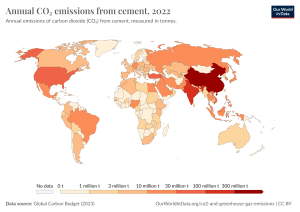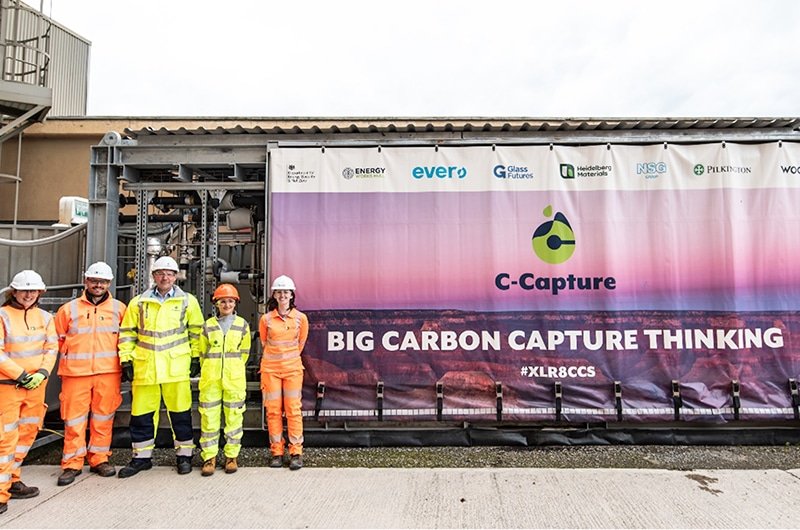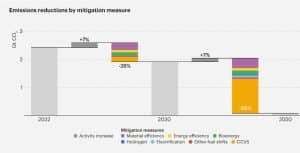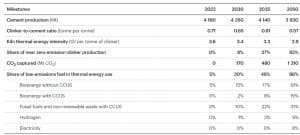C-Capture, the UK-based pioneer in carbon capture solutions, has initiated testing on a novel technology to reduce carbon emissions from cement production. This is undoubtedly an exciting development for the cement industry marking their ongoing efforts to mitigate its environmental impact and contribute to global decarbonization.
Notably, as part of the XLR8 CCS project, C-Capture, and Wood, a top-tier engineering firm in the UK, have designed and installed a new Carbon Capture solvent compatibility unit (CCSCU). XLR8 CCS project exclusively targets the “hard to abate” industries. Currently, it is operating at the Heidelberg Materials cement plant at Ketton, Lincolnshire, UK.
Unleashing C-Capture’s Next-Gen Carbon Capture Technology for Cement
C-Capture mentions concrete as the second most used material on Earth after water. Three tonnes of concrete are used annually per person worldwide. Cement, made from clinker and gypsum is the main component of all construction works.
Tom White, CEO of C-Capture said:
“Decarbonising industry is one of the most pressing global issues. C-Capture’s XLR8 CCS project is a critical step in the race to net zero as we work with our innovative technology and leading industry partners to demonstrate that an affordable carbon capture solution is a reality – even for industries that are difficult to decarbonize.”
-
The cement industry produces 4 Gt of cement annually, generating 1.5-2.2 Gt of CO2 emissions, about 5% of the global total.
It needs to decarbonize because: Clinker manufacturing uses coal or natural gas-fired kilns to heat limestone (CaCO3), emitting large volumes of CO2 to form lime (CaO).
The World Business Council for Sustainable Development estimates that by 2050, the cement industry must reduce CO2 emissions by 0.5 Gt annually to keep global warming within 2 °C above pre-industrial levels.

(*Flue gases are the gases released to the atmosphere from exhaust pipes of heavy industries.)
Innovative Chemistry for a Greener Solution
C-Capture’s technology utilizes a fundamentally different chemistry, unlike other commercially available carbon capture methods. It does not rely on amines and is nitrogen-free. This technology offers a lower-cost and environment-friendly solution, the end product can be renewable fuel like biomethane. Additionally, it is extremely robust and capable of withstanding the challenging flue gases produced by the heavy sectors.
XLR8 CCS Project: A Multi-Industry Initiative
The XLR8 CCS project is showcasing the compatibility of C-Capture’s carbon capture technology across three difficult-to-decarbonize industries: energy from waste (EfW), cement, and glass. The project would conduct six carbon capture trials within these sectors.
Wide Deployment Across Industry Partners
CCSCUs are being deployed at sites owned by project partners including Heidelberg Materials, Energy Works Hull, Glass Futures, and Pilkington UK (part of NSG Group). The success of this project will position C-Capture and its partners to deploy commercial-scale carbon capture facilities across these industries by 2030, potentially capturing millions of tonnes of CO2 per year.
Major Funding Injection Supercharges C-Capture’s Carbon Capture Project
The UK Department of Energy Security and Net Zero awarded a £1.7 million grant to XLR8 CCS from its £1 billion Net Zero Innovation Portfolio. Private sector contributions brought the total funding to £2.7 million.
This funding comes from the £20 million Carbon Capture, Usage and Storage (CCUS) Innovation 2.0 program, which aims to accelerate the deployment of next-generation CCUS technology in the UK.
Simon Willis, CEO, of Heidelberg Materials UK has emphasized deeply the urgency to decarbonize the toughest sectors. He noted,
“Carbon capture is a critical part of our strategy to decarbonize cement production and essential if we are to reach net zero and help our customers achieve their own decarbonization goals.”
He also envisions developing new technologies and partnerships, exemplifying C-Capture’s dedication. The Heidelberg group will roll out this technology at other sites if the first run becomes successful.
Roadmap to 2030: Strategies for Curbing Cement Emissions
Reducing CO2 emissions while meeting cement demand will be challenging. Since 2015, the emissions from cement production surged to ~ 10%, primarily due to the high clinker-to-cement ratio within China. Therefore, curbing emissions approximately by 20% by 2030 will significantly depend on:
- Adopting CCUS technologies
- Using environment-friendly raw materials
- Improving energy and material efficiency
- Using low-emissions fuels
source: IEA
Direct emissions intensity of cement production in the Net Zero Scenario, 2015-2030

Like C-Capture, many industries are also revolutionizing their cement production techniques. It distinctly shows a gradual decline in CO2 emissions from the cement industry in the coming years (2030), thus enhancing the net zero transition.



